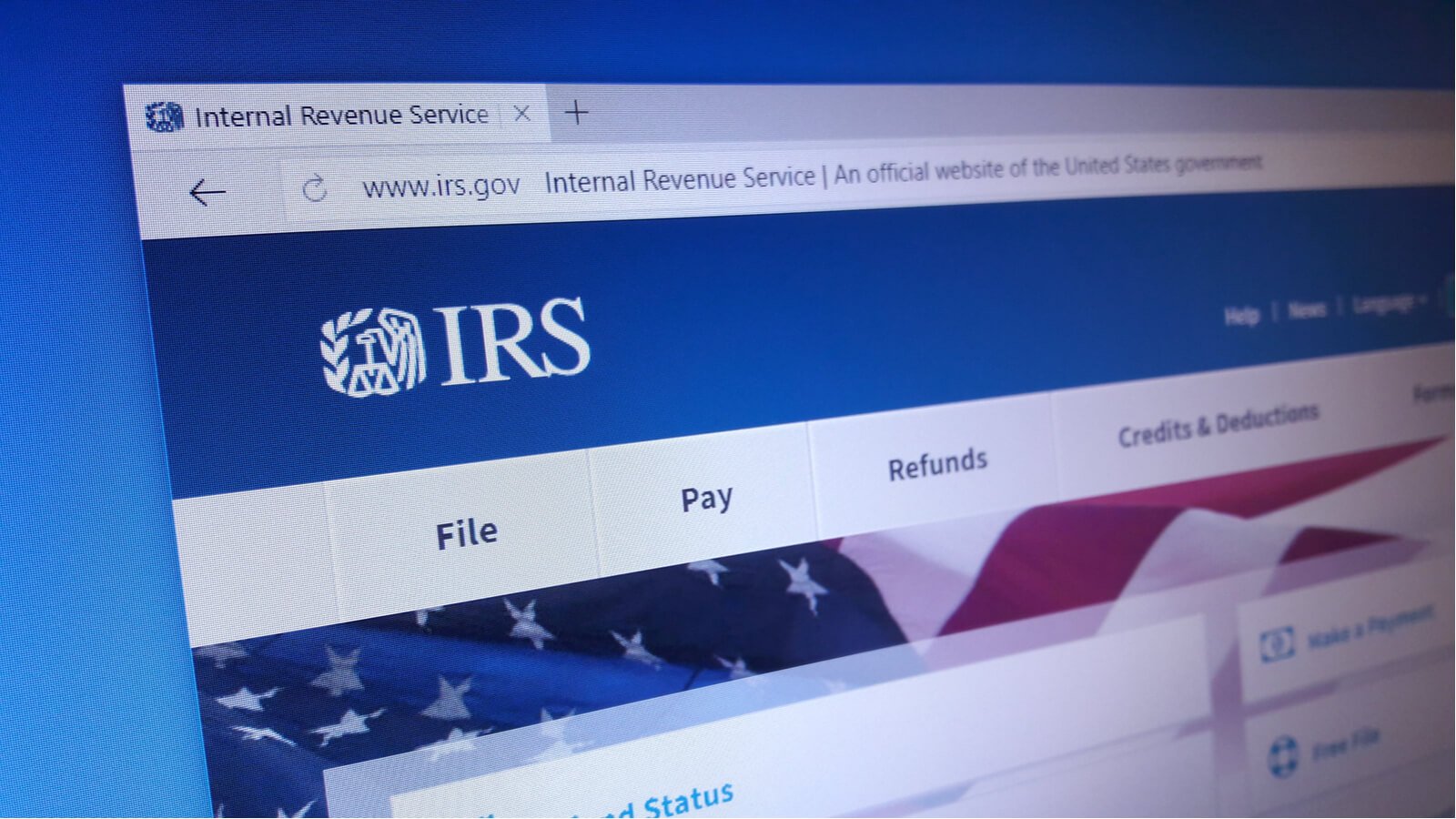Paying your federal taxes takes only a few minutes online. Here are the steps to take and where to go.
Filing your tax return can be confusing for small business owners — but paying the taxes you owe is a lot simpler.
When you pay federal taxes, it’s as simple as going to the IRS’s online payment page. There are several different payment options available online for whatever fits your preferences.
Your options depend on who you are and what taxes you need to pay. One thing you should look out for is some options saying that only individuals can use them. That may be misleading for a small business owner like you. If your LLC is a partnership, S corp or anything other than a C corp, you’re considered an individual to the IRS, not a business.
However you pay, make sure to do it on time (or enroll in a payment plan) so you’re not subject to pay even more in penalties and interest.
How to pay your federal taxes
There are several different ways for you to pay your tax balance. The easiest, safest and most common way for small business owners to do it is by paying online. There are cash and check options available, too, if you really want to do it the old-fashioned way — though you shouldn’t.
The first step to paying your tax bill is visiting irs.gov/payments. You can find the details for the many different ways to pay there. The list below will give you an overview of some of the most common options for payment.
IRS account
| Pros | Cons | Fees |
|
Allows you to access records and view past payments You can apply for payment plans Acts as a one-stop shop for your payments and information |
Registration process | No fees |
You can pay straight from your IRS account without having to go through any other portals.
This is an easy-to-use resource for small business owners to manage nearly every aspect of their taxes. You can pay your balance, view past tax returns, apply for payment plans, view your tax notices and more.
You’ll need to go through a registration process, which options like Direct Pay don’t make you do. However, it’s short, painless and you only have to do it once.
| 🖥️ Find out 4 reasons you should create an IRS account and how to do it. |
How to pay your taxes with an IRS account: Go to IRS.gov/payments and select Go to Your Account. After you either log in or create your account, you can pay there from your bank account, debit card or credit card.
Direct Pay
| Pros | Cons | Fees |
|
No registration required No processing fees |
Not available 24/7 | No fees |
Direct Pay is another straightforward way to pay your taxes. You can use this to pay your income taxes, estimated taxes and certain tax notices.
This is typically the best option for small business owners because you don’t have to spend time creating an account like you do with the Electronic Federal Tax Payment System, and you don’t have to pay the fees associated with third-party processors that corporations have to use. You can schedule your payments ahead of time as well.
How to pay your taxes with Direct Pay: Go to IRS.gov/payments and click Direct Pay. Then follow this step-by-step guide on using Direct Pay.
Electronic Federal Tax Payment System (EFTPS)
| Pros | Cons | Fees |
|
Saves your information for easy payment You can pay all of their federal taxes Available 24/7 |
Long registration process You need to remember your EIN and your PIN |
No fees |
The EFTPS is an online portal you can use to pay all of your federal taxes. This is primarily used by corporations, but small businesses can use it too. It’s free to use and available 24/7.
This portal isn’t run by the IRS — it’s run by the U.S. Department of Treasury, so it’s still a safe option. The biggest downside to the EFTPS is you have to set up an account and have it approved before you can pay with it. This process creates an unnecessary barrier that small businesses can usually avoid by using Direct Pay.
However, it does save your personal and financial information so you don’t need to enter it every time you want to pay your taxes.
How to pay with the Electronic Federal Tax Payment System (EFTPS): Unlike other payment options, you have to enroll and create an account with the EFTPS. So visit the EFTPS homepage, click enroll and then create your account.
Once you’re logged in, you can pay any of your federal taxes from there — including your income tax, payroll taxes, estimated taxes and more.
Payment plans
| Pros | Cons | Fees |
|
Accommodates your cash flow Security in knowing your balance will be paid off by a certain date Automatic payments save you time and give you peace of mind |
Takes longer to pay your taxes Your taxes accrue interest |
No setup fees for short-term payment plans plus interest and penalties $31 setup fee for long-term payment plans plus interest and penalties using automatic withdrawals $130 setup fee for long-term payment plans plus interest and penalties using manual payments |
Payment plans are available for both individuals and businesses. LLC owners taxed as sole proprietors, partnerships and S corps should apply for a payment plan as individuals.
A payment plan allows you to pay your tax bill in smaller chunks every month. There are short-term payment plans that last up to 180 days and long-term installment agreements that can last longer. This is a great option if you have a large balance that you may not be able to pay in full right away.
You should pay in full whenever you can to avoid penalties and interest fees, but that’s not always possible with large balances. There are some one-time setup fees with most plans that range from $31 to $130.
How to pay with payment plans: Visit IRS.gov/payments and click to apply for a payment plan. Once you’re on the payment plans page, choose to apply as an individual.
Cash or check
| Pros | Cons | Fees |
|
Not subject to online failures |
More time-consuming than online payments Takes longer for IRS to process |
$1.50 fee for cash payment No fees for checks |
The IRS strongly recommends paying your tax bill online instead of with cash or checks. It’s safer, faster and easier. But if you can’t or don’t want to for whatever reason, you can still pay your taxes.
There are certain limits to how much you can pay using cash and checks — especially cash. With cash, you can only pay up to $500 per payment. There’s also a lot more legwork on your part, too: You have to figure out which locations will accept cash payment or what address to send your check to.
The only major advantage of cash and checks is they’re not subject to internet failures. Still, if you’re mailing a check (you can’t mail cash), you should do it ahead of the deadline to ensure you’re not charged with any penalties or interest. Use certified mail and return receipts whenever you mail something to the IRS.
How to pay with cash: You can’t mail your cash to the IRS. So they suggest a few different ways to pay using cash. You can use the IRS’s app, pay at a retail partner (which are mostly drugstores and gas stations) or pay at an in-person IRS Taxpayer Assistance Center.
How to pay with checks: Find out what address you have to mail your check to at this IRS page. You need to include your Employer Identification Number (EIN), phone number, relevant tax year, address and more information the IRS lists here. Once you have the right address and the additional information the IRS needs, you can mail your check.
When do I need to pay my taxes?
Once you decide how you’re going to pay your taxes, you’ll need to know when to pay them by.
The deadline to pay your taxes is always the day your tax return is originally due. Even if you file for a tax extension, your payment due date won’t be extended with it. And we're talking the full balance due, even if you aren't sure how much you owe.
For individuals this is generally April 15th.
| 📅 View a full list of the major tax deadlines here. |
Payment plans are available if you can’t pay your tax balance right away. Depending on your situation and the amount you owe, you can apply for short-term or long-term payment plans.
So before your tax due date rolls around, plan how and when you’ll pay ahead of time. If you’re not sure the best way to go about it, schedule a free call with a member of our team.
The bottom line
Filing your tax return is the hardest part of tax season — paying should be the easiest.
There are plenty of ways to pay your taxes, but the best ways are by using your IRS account or the IRS’s Direct Pay tool online. They’re the simplest ways to get your tax bill taken care of — and they’re both free. There are other ways too, like the EFTPS and cash or checks, but they’re more costly and take away more time from you to focus on your business.
Another way to pay your tax bill is with a payment plan. You can make monthly payments toward your tax bill if that’s a better option with your circumstances. Just be aware that you’ll likely pay more with penalties and interest tacked on to your bill.
If you want the best chance of lowering your tax bill, schedule a free call with a DiMercurio Advisors team member today. You can learn how an expert can help solve your problems so you could enjoy running your business stress-free.








